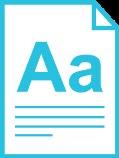FET Phase
Grade 12 • Facilitator’s Guide
English Home Language: Language
Owned and published by Optimi, a division of Optimi Central Services (Pty) Ltd.
7 Impala Avenue, Doringkloof, Centurion, 0157 info@optimi.co.za www.optimi.co.za
© Optimi
Apart from any fair dealing for the purpose of research, criticism or review as permitted in terms of the Copyright Act, no part of this publication may be reproduced, distributed, or transmitted in any form or by any means, electronic or mechanical, including photocopying, recording, or any information storage and retrieval system without prior written permission from the publisher.
The publisher has no responsibility for the persistence or accuracy of URLs for external or third-party internet websites referred to in this publication, and does not guarantee that any content on such websites is, or will remain, accurate or appropriate.
There are instances where we have been unable to trace or contact the copyright holder. If notified, the publisher will be pleased to rectify any errors or omissions at the earliest opportunity.
Reg. No.: 2011/011959/07
English Home Language
Facilitator’s guide: Language
Grade 12
CAPS aligned
H de Villiers
TIMETABLE AND TIME MANAGEMENT
The timetable will help you to with plan your time and work during the year and will also give an idea of what will be expected from candidates in examinations and tests. The allocation in the timetable for Home Language is 4.5 hours per week. If you add 20 – 30 minutes homework per day, you’ll find that candidates can cope with the quantity of work included in each lesson.
Home Language time for Grade 12 is calculated on a 30-week academic year, with an additional 10 weeks for exams. In reality, the 30 weeks does not always realise. It depends on what dates are set for the beginning of the Preparatory Exams (Prelims) and the final matric exams. You will see that the year plan below doesn’t have 30 weeks. The two weeks or so that should be available in the fourth term have not been included, because this will involve revision.
Study units must be done thoroughly. Answers should be done carefully and thoughtfully. Do not use the memorandums as an easy solution. The purpose of many questions is to encourage your independent thinking and to use language for expressing your own thoughts.
The National Curriculum Statement focuses on active and critical learning, encouraging an active and critical approach to learning, rather than rote and uncritical learning. The NCS sets high, achievable standards in all subjects. The focus of this English course is mainly on advanced reading and writing skills – comprehension and appreciation of literary texts, and communication skills to express one’s knowledge, thoughts and opinions. Candidates are required to not simply take a text at face value, but to read between the lines; to make “personal, thoughtful, and honest interpretations and comment”, to make their own deductions and question certain statements. This requires practise. Candidates must constantly think about what they are reading. “Unless they learn how to understand a literary text on their own, they will not have learnt much. Interpretation is not about right or wrong [within reason], it is about searching for what is meaningful to the reader.” (Quoted extracts from the Curricular and Assessment Policy Statement (CAPS) of the Department of Basic Education.)
ASSESSMENT REQUIREMENTS
Assessment policy
The assessors need to see that the candidate has made progress in terms of critical thinking; reading, writing and reasoning skills. Candidates should never hesitate to give an opinion and show independent thought.
(Listening and Speaking) is assessed in four different tasks which test different skills. These tasks: 1, 4, 7 and 9 form the oral mark for the candidate. The oral tasks add up to 50 marks, and these marks count twice: They form part of the portfolio which forms the SBA (school-based assessment), and they also count separately as Paper 4 in the final examination. It is worth the while to do these tasks well.
(Reading and Viewing) is assessed in Paper 1 – the comprehension and visual literacy components – and is marked according to a memorandum. In Paper 2, Literature is assessed by means of tests (contextual questions) – marked according to a memorandum – and literature essays – marked by means of a rubric. In the literature section you will be required to think critically about everything you read. Assessors should always consider the manner and level of engagement with the text, as shown by the candidate.
(Writing and Presenting) is assessed by all essays and transactional writing samples in the portfolio and examination papers. As far as portfolio work is concerned, it is required that you include as much of the writing process in the work as possible, e.g. planning, editing and proofreading.
(Language Structures). Tests are used to assess comprehension, summary skills, visual literacy and language structures.
Assessment is done by means of:
Sample
• a memorandum in the case of listening comprehension, comprehension and language questions. When the candidate is responding to a verbal or visual text, (i.e. comprehension, advertisement, cartoon and literary texts), bear in mind the “personal, thoughtful, and honest interpretations and comment” mentioned on the previous page. There may be other valid interpretations (with emphasis on “valid” – the candidate must have convincing substantiation for their interpretation). So, particularly in cases where the memorandum says [Own opinion] you need to consider whether the interpretation/opinion is substantiated.
• a memorandum and instructions on mark allocation in the case of the summary. (The unit on summary has the instructions on how to mark the summary.).
• a rubric in the case of oral, creative writing and literature essays. These rubrics are provided in the facilitator’s guide, as well as in the study notes which accompany the candidate’s language study guide. It is important that the candidates take note of how their work will be assessed by looking at the rubrics before starting work.
Examinations
• At the end of the second, and early in the third term, full examinations will be written. The final examinations are usually early in the fourth term. The papers will be set as follows:
Paper 1 Comprehension and language
Comprehension test, summary, visual literacy (cartoons, advertisements, or other visual texts) textual editing including language structures – know all theory well, as explained in the Study Guide.
SECTION A: Comprehension (30 marks)
A range of texts may be used, including visual and/graphic material.
SECTION B: Summary (10 marks)
Length of text: 250 words to be summarised in 80 – 90 words.
SECTION C: Language (30 marks)
A variety of texts (advertisements, cartoons, prose texts, dictionary entries) will be used to test visual literacy and language structures.
Paper 3 Creative writing Know the forms of the writing you have done, e.g. a formal letter, memorandum, etc. Pay attention to different types of essays, good writing and style.
SECTION A: Essay: Choose ONE topic (50)
SECTION B: Transactional: Choose TWO topics (50)
GRAND TOTAL: 100
Paper 4 Oral
This is not a separate exam, but the tasks that you have done throughout the year will be added again as Paper 4 (PAT).
TOTAL: 50
• Please note: The oral tasks must all be completed according to date on the annual calender. For each task, proof of research and preparation must be attached to the assessment rubric.
• Term tests.
• All formal tasks will be marked by Impaq.
• The term tests will have the same form and content as the examinations explained above.
Portfolio
The purpose of a portfolio is building a “file of proof” that you have actually worked in English throughout the year, as opposed to a crash course shortly before the examinations, and then forgetting about English until the next examinations approach.
The portfolio will consist of a neat folder into which all prescribed assignments are bound, in order of task number. Use the study timetable and the programme of assessment to plan the portfolio work from the first day
Do not send in all assignments for marking; only the portfolio tasks that are to be downloaded from my.Impaq.
STUDY TIPS AND METHODS
Many of the study tips are included in the lesson itself, and in the literature study guide.
General tips
• Carefully read the passages for comprehension and summary.
o In a test or exam, it’s sometimes a good idea to read the questions first to get an idea of what is required – then, when you read the passages, you will already be attuned to this.
o In the case of lessons, it is more important to read the passages first, two or three times – because you are, after all, practising your reading skills and not only being tested on them.
• Read questions carefully and take note of mark allocation. You have to give your answer and justify it – explain your reasoning. This generally does not apply to grammar questions (e.g. “What is the purpose of the full stop in this sentence?”).
• Take mark allocation into account. It is very important to make sure that you give a sufficiently detailed answer! However, do not ramble on, keep to the point.
• If there are a number of facts to remember, think of a rhyme to help you: e.g. the coordinating conjunctions are and, but, or, yet: ABOY. Co-ordinating conjunctions make compound sentences, where the clauses are equally important. This is seen in the word co-ordinating – suggests balance, and the repeated “o” is found in the word compound.
• Diagrams on your wall (a suitably sized whiteboard is a good idea because you can clean and replace the work on a regular basis): Mind maps, writing up something that you continually forget, or want to remember.
Sample
• When writing the exam, you do not have to start at Question 1 and work your way through the questions. In the Language paper, for instance, you can start with Question 3 or 4 (the advert and cartoon questions) and leave Question 2 (summary) for last. As long as you keep the whole of each question together, i.e. don’t do 3.1 and then 3.5 and then later in the paper do 3.2. You may choose to answer the questions you find easier first and leave the difficult ones until the end.
• Find out what type of learner you are – visual, auditory, or kinaesthetic – and adapt your learning methods accordingly. If you’re kinaesthetic, for instance, you might want to doodle while learning, or get up and walk around; an auditory learner needs to talk and hear, etc. There are several websites that provide a reasonable test of this such as faculty.mu.edu.sa/download.php?fid=24012. You can then adapt your learning methods to suit your style by following the links.
OTHER USEFUL INFORMATION
Recommended language text books to supplement your studies
1. English in Context Grade 12 (new CAPS edition) by J. O Hendry et al. (Maskew Miller Longman). ISBN: 978-0-636-14002-8. [An excellent chapter-by-chapter approach to CAPS, e.g. Chapter 1: Comprehension; Chapter 3: Summary; Chapter 5: Creative Writing etc.]
2. The Teacher’s Guide for English in Context is also available, and contains the answers to the exercises. ISBN: 978-0-636-14594-8
3. English Handbook and Study Guide by Beryl Lutrin and Marcelle Pincus. (Berlut Books). ISBN: 978-0-620-32583-7. [An excellent reference book for all aspects of grammar, and also includes sections on Writing, Oral and Literary Essays.]
4. Reader’s Digest Oxford Complete Wordfinder. (Reader’s Digest Association in conjunction with Oxford University Press). ISBN: 0276421019. [This combines a dictionary (which includes etymology of words, as required in the language syllabus) and a thesaurus.] OR a Cambridge dictionary, or any other recognised dictionary. Avoid the pocket dictionaries and others that don’t have etymology for the words.
5. Macrat is an organisation that publishes study guides for English Home Language – written by teachers, for teachers. You can contact them via their website at www.macrat.co.za or on Facebook: https://www.facebook.com/MacratPublishing
Sample
6. Previous Department of Basic Education Grade 12 National Exam papers are available at: http://www.education.gov.za/Examinations/PastExamPapers/tabid/351/Default.asp x Remember that this is the first year that Paper 3 consists of only two sections, the Essay (50 marks) and Section B (2 pieces marked out of 25 marks each). Previous papers have Section B (30 marks) and Section C (20 marks).
PREFACE
INTRODUCTION
Most of the lessons are set out in the candidate’s study guide so that they can practise their reading, writing and language skills in context, as required by CAPS. The language syllabus is largely covered by the time they reach this level, and it ought to be revision of knowledge and skills they acquired in the earlier grades.
NOTE that literature lessons are in the separate literature guide. The number of lessons may seem to be fewer than are allocated by the Department, because there is a great deal of focus on the literature and poetry components of the Grade 12 syllabus.
In this guide, at the beginning of each unit there is an overview of the unit and some pointers about the baseline knowledge expected, and about what to focus on to develop and improve reading and language skills. It is important to be aware that English is a communicative subject and the texts should preferably not be read in isolation, but read aloud and discussed.
The same applies to the answers – the learning experience will be more effective if the facilitator goes through the answers provided in this guide with the candidate – have a discussion about them. In the classroom this usually occurs the following day, after the candidate has done the homework. If it is still fresh in the candidate’s mind the learning process and any remediation is more effective. If the candidate simply checks their answers with the guide or the facilitator marks it, there’s no real feedback. When more than one person speaks their mind on a topic, it immediately stimulates the critical thought processes of the other.
Important information for candidates
Please mark all work that you submit on each page as follows:
1. Name and surname
2. Registration number
3. Grade
4. Nature of work: (Examination Term 2, Paper 1, etc.)
Your work will be returned unmarked if you fail to do this.
Literature: Know the texts very well. The examiner does not know your notes and is not interested in them either. They are only meant to help you.
All literature notes (not texts) are included in the literature guide. These notes provide detailed analyses of the prescribed poems as well as the chosen novel and drama. Knowing the background to both texts will enhance your understanding and enjoyment. The themes of literature are usually still applicable. Open your eyes, look around you at the world and you will find plenty of examples of leaders abusing power and mass hysteria leading to catastrophes.
LESSON ELEMENTS
LEARNING AIMS
What the learner should know at the end of the lesson. Taken from CAPS
IMPORTANT TERMINOLOGY
New terminology to extend understanding of the subject as part of the lesson.
DEFINE
Definitions of concepts to understand the content.
IMPORTANT
Explain misunderstandings; possible confusion regarding existing knowledge.
TIPS
Any information other than the content, to guide the learner through the learning process.
FOR THE CURIOUS
Encouragement to do in-depth research about the content. Expand the activity and exercise to such an extent that the learner is encouraged to explore. For the gifted learner: expanded exercises. For Learners with Special Educational Needs (LSEN): explain the need to complete the basic questions to achieve a passing mark.
ACTIVITY
Questions that must be done to test the knowledge of the completed lesson
EXERCISE
In conclusion of the specific unit. Formative assessment.
CORE CONTENT
Emphasise the core content; in-depth explanation of a specific section of the lesson; must be understood.
STUDY/REVISION
Time spent to study the content in conclusion of the unit and in preparation for the test or examination.
Week 1
Week 2
Week 3
Week 4
YEAR PLANNING
TERM 1
Settling in – get books together, overview of year plan and assessment programme
Unit 1: Lesson 1 – Comprehension
Unit 1: Lesson 2 – Listening strategies
Lesson 3 – Writing and presenting
Unit 1: Lesson 4 – Punctuation
Lesson 5: The apostrophe
Week 5 Unit 1: Lesson 6 – Visual literacy: Cartoons
Week 6 Unit 2: Lesson 8 – Summaries
Week 7 Unit 2: Lesson 9 – Visual literacy: Advertisements
Discuss work to be learnt for the language test in week 8.
Week 8
Unit 2: Lesson 11 – Dictionary skills
Week 10 Unit 2: Lesson 12 – Textual editing
Week 1
Week 2
Week 3
Week 4
Week 5
TERM 2
Unit 3: Lesson 13 – Comprehension
Unit 3: Lesson 15 – Direct and indirect speech
Unit 3: Lesson 16 – Revision of letters, dialogues, diary entries, reviews
Unit 3: Lesson 17 – Advertisements
Unit 3: Lesson 18 – Simple, complex and compound sentences
Week 6 Unit 4: Lesson 19 – Revision of reports, minutes, written speeches, emails
Lesson 20 – Cartoons
Sample
Week 7 Unit 4: Lesson 21 – Active and passive voice
Week 8 Unit 4: Lesson 22 – Textual editing
Week 9 –12 Revision June examination
Week 1 Exam feedback
Language revision
TERM 3
Revision of language and creative genres
Week 6 –10 Preliminary Examination
*Additional notes and updated lesson plans are available online on the Optimi Learning Portal (OLP) Refer to OLP for all other lesson content.
UNIT 1: World Cup fever
LEARNING OBJECTIVES
Reading and Viewing:
1. Comprehension – types of texts, compare texts.
2. Work out the meanings of unfamiliar words.
3. Answer comprehension questions from low order to high order.
4. Identify features of the text.
5. Understand visual texts: Cartoons.
Language Structures:
Understand the meaning and use of punctuation marks in texts.
Listening and Speaking:
Complete an assessment task on a listening comprehension.
Writing and Presenting:
Write, edit and present an essay for an assessment task.
INTRODUCTION
SampleThis unit is designed to practise reading and viewing skills, as well as understanding and being able to use language structures in context. By now, candidates should be familiar with all language structures, as well as verbal and visual texts; it is a matter of practising their skills.
Vocabulary development is an important factor of being able to decode texts effectively; so reading the passages provided and discussing the texts (“World Cup Fever”, “Bookshelf” and the visual texts), forms an important part of (a) development of vocabulary in making meaning of texts and unfamiliar words; as well as (b) allowing candidates the opportunity to express their opinion and responses to texts.
To understand the satire in cartoons, candidates must have some knowledge of current affairs. This and the understanding of the verbal texts means that they must be encouraged to read as widely as possible: The set works, newspapers, novels, short stories, texts on the Internet. Baseline knowledge for the cartoons is provided in the lesson itself in the study guide.
IMPORTANT TERMINOLOGY
Not new, but may need revising! All of these can be found in the glossary provided in Addendum C.
• Figures of speech: e.g. metaphor, rhetorical questions, pun, etc.
• Features of texts, e.g. style, diction, genre, satire, irony
• Advertising terms: slogan
• Features of visual literacy, e.g. font, caricature
LESSON 1: Reading and viewing – comprehension (1)
DEFINE
Refer to Addendum D (Terms used in Comprehension and Literature Questions) and STYLE and DICTION in the glossary (Addendum C).
The comprehension passages are to be read and discussed – first stage is to sharpen reading skills by the reading process (preferably aloud, particularly for auditory candidates) and appreciation of the passage via the discussion.
Note that TEXT TWO is a visual text – again, discuss the texts, and don’t simply use them to answer the questions.
The questions are to be answered and checked against the memorandum. Discuss any answers that require it.
Read the two texts provided for this lesson – the passage entitled “World Cup Fever” and the visual texts labelled Text B – and then complete the comprehension activity.
ACTIVITY 1: MEMORANDUM
1. At Rugby school, a boy broke the rules of soccer by picking up and running forwards with the ball, and this became the game of rugby. (2)
2. The excitement associated with the World Cup is compared to a fever. A fever is a condition which involves high temperature, and some fevers can spread rapidly. Similarly, the excitement surrounding the World Cup (or rugby) is infectious and leads to high temperatures as people hold heated discussions about the sport, or is passionate about it. (4)
(REMEMBER: (a) what is compared with what; (b) features of a fever that will be relevant to the World Cup; (c) what is being said about the World Cup).
3. It is used as a device to make the reader wonder, and then introduce the next paragraphs in which the origin of rugby – based in soccer – is given. (2)
4. “Kicked off” has two meanings here: It means that the tournament started; but also plays on the idea that a rugby match starts with a kick-off. (2) (NB: ALWAYS give both meanings of a pun: The obvious meaning and the other (often implied) meaning.)
5. His interest in rugby history is purely personal or as a hobby; he is not a professional historian. (1)
6. “forward”. (Soccer players in those days could pick up the ball and run backwards with it. Webb Ellis was the first to run forward.) (1)
7. It is colloquial, conversational and informal. “Naughtiness” and “kicked off” are examples of informal and colloquial diction. Contractions such as “wasn’t”, “I’ve” and “isn’t” are used. Because contractions are normally used in direct speech, they give a more informal or colloquial feel to the passage. Use of the first person (“we”) makes the style more personal and conversational. (6)
8. “Sizzling” links up with “hot” and “the Gospel” links up with the religious idea of “faithful”. (2)
9. The adverts rely mostly on the word “scrum” which will catch the eye of any rugby fan. However, the white shape containing the website and information is shaped like a rugby ball, and the full stop for “dot com” has been replaced with a miniature rugby ball poised to be kicked. (3)
Sample
10. The adverts drum up excitement for the Rugby World Cup, and target people who are very excited about not missing a thing, so it echoes the metaphor of “World Cup Fever”. (2)














